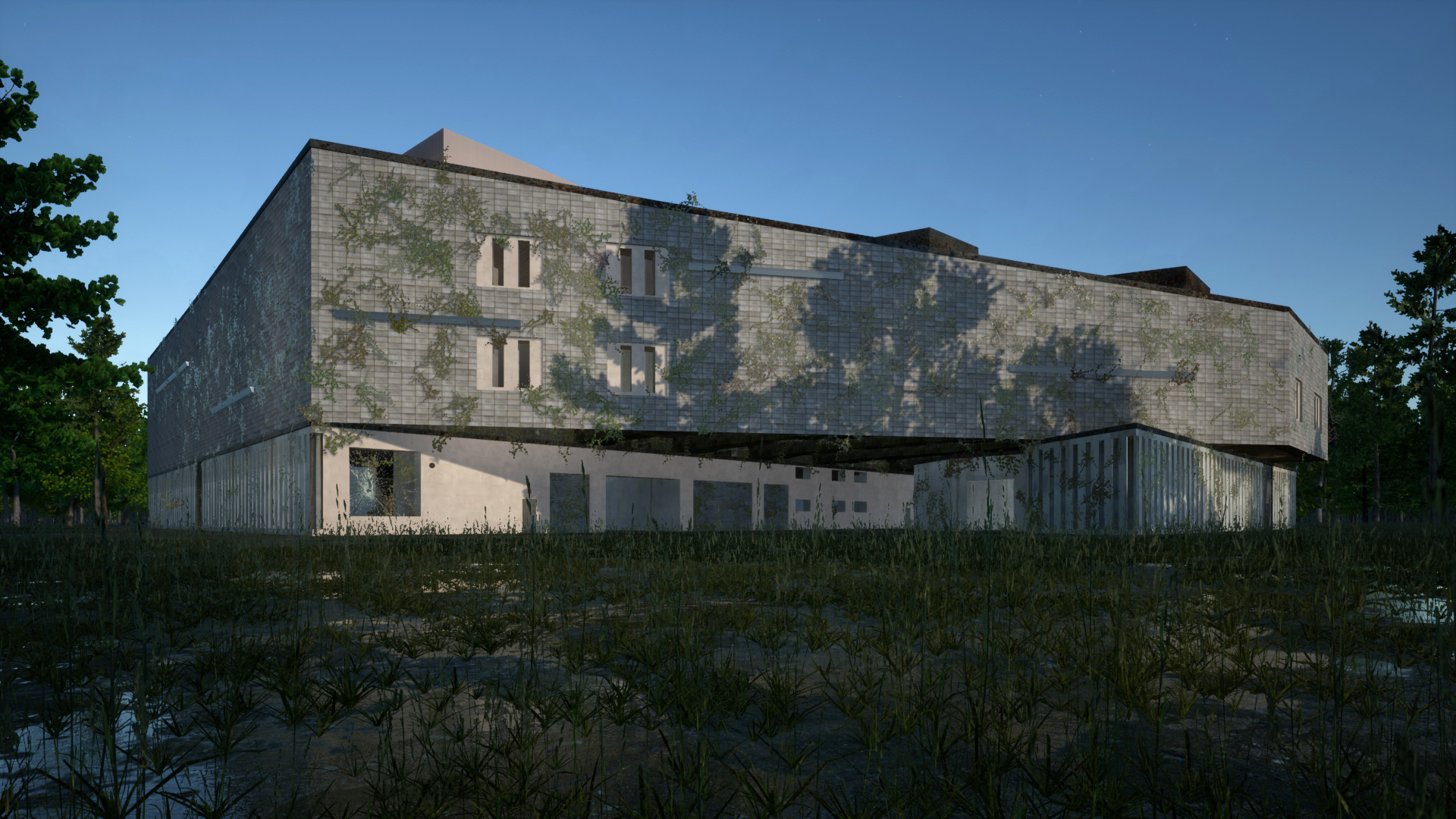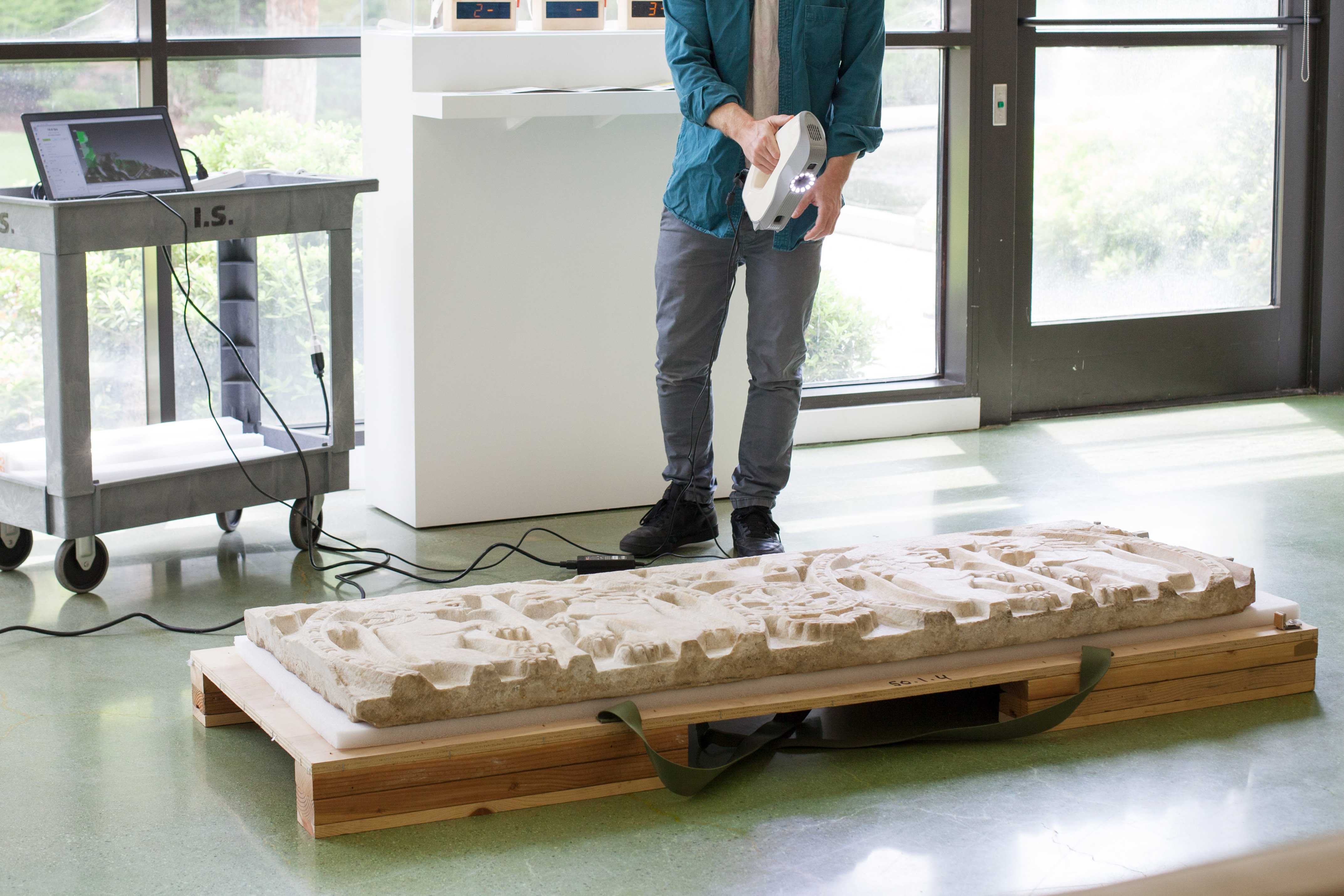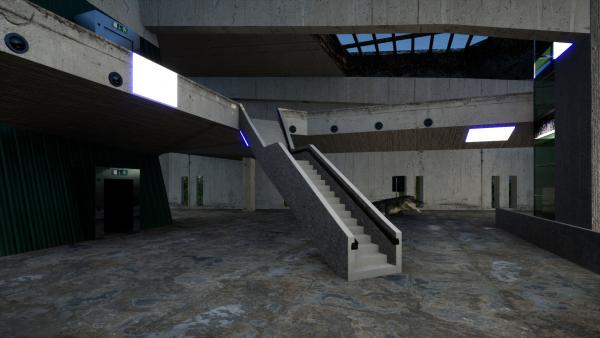Welcome to part 3 of NFTs and the Museum, a series of conversations between art and culture practitioners in and outside of LACMA. The series examines what NFTs mean for museums that collect digital art, and looks at the artistic, curatorial, conservation, registration, and legal issues of this new digital format. This post features artist and Art + Technology Lab grant recipient Cayetano Ferrer in dialogue with artist Peter Wu+, whose platform EPOCH recently offered the entirety of its current virtual exhibition as a NFT.
Cayetano Ferrer: Hi, Peter. We’ve been having an ongoing conversation about blockchain and its implications on art and the economy since around February. We haven’t had a chance to talk since your latest exhibition Freeport and I’m glad to catch up here about your recent use of NFTs and how it relates to your exhibition platform EPOCH. Something that interests me about EPOCH is that it holds a balance between certain extremes. One example is this disembodied viewership in art which was increasingly the norm even before the pandemic, but really crystallized to a new level last year with basically every MFA program and art fair moving into screen-based interactions. While many galleries were trying to figure out the best WordPress plugin for their “online viewing rooms,” you started working with the premise of siting artworks in these elaborate fabricated contexts, often modeling an actual building or site in a state of ruin. So through this disembodied, screen-based approach, you’ve managed to reintroduce site and context to this virtual experience in an impactful way. The works by different artists have a range of fidelity to pre-existing artworks all the way into a space that feels much more speculative or fantastical. The utopia/dystopia dichotomy seems ever-present. Between all these tensions, it seemed like this project was almost asking you to address the economy, and cryptocurrencies and non-fungible tokens seemed like a useful vehicle. This is where we picked up the conversation earlier this year and I wonder how you see the project’s evolution leading up to your recent adoption of blockchain technology.

Peter Wu+: Thanks, Cayetano, for continuing this conversation and for the perceptive introduction. EPOCH is an artist-run virtual gallery launched in the nascency of quarantine. It was created in response to IRL museums and galleries shutting down, which caused artists to lose our exhibition opportunities. I wanted to curate an experimental space, outside of the traditional white cube, where the 3D environment and architecture would change for each exhibition, allowing for its theme and context to respond to current socio-political events. After our initial conversations about what was lacking in art economies and what could be possible with blockchain technology, the concept for the exhibition Freeport (on view June 12–October 1, 2021, featuring Neïl Beloufa, Sarah Rosalena Brady, Alice Bucknell, Juan Covelli, Alexandra Koumantaki, Amanda Ross-Ho, and Hirad Sab) emerged. Modeled after the actual floor plans and elevations of the Luxembourg Freeport, it is an ironic attempt to circumvent the parallels between freeports and NFTs (both exist in unregulated territories, are constructs of capitalism, and can illicit fraud and tax evasion) by introducing a holistic model built upon ecological, equitable, and sustainable practices. This is the first time an entire virtual exhibition containing a compilation of artworks by the participating artists has been offered as an NFT, and the first time an equitable smart contract which shares profits and royalties between multiple artists has been introduced. Your input was integral to the structure of this smart contract. Maybe you can elaborate on your interest in NFTs and equitable contracts?
Cayetano: My interest came relatively late, around December of 2020, as things were already percolating towards these big media events this year, but I dove in pretty deeply and my general interest in blockchain and smart contracts goes back a bit further. For much longer I’ve been doing research into artist’s legal contracts, both on the public facing creative work and in the functional sense of how artists structure their studios or how they position their works in a larger economy, and also different examples of artist collectivity like the W.A.G.E. and the 1933 Artists Union. Artists have agency to create parameters about how their artworks move through the world, and since context is so important to reception, this can have a huge effect on how meaning is transmitted through the work. So this is really an extension of thinking about site and context, where certain artworks might enter an economy but also have some kind of structure or guardrails after they leave the artist. This can be a paper contract or certificate of authenticity that comes along with the artwork and sets all the terms of display and the boundaries of authentication, moral rights, resale royalties, or other details.
Many artists have built on and expanded these legal notions, one famous example being the Projansky contract, which Seth Siegelaub developed with lawyer Robert Projanksy. The main point of this contract is to distribute resale royalties any time an artwork is resold in the future, but it’s not purely economic. Artists can use the contract to maintain an active record of where their work is located. It’s an amazing document, but as a paper contract, it’s a bit hard to use and enforce, and when the recent wave of digital artists used NFTs to hardwire royalties into the transaction process it seemed to open up some new possibilities. This led me to start thinking about different ways artists could use these protocols to develop new forms of agency over their work or as a tool to insert some kind of polemic boundary around the work that travels with it. It’s all pretty theoretical at this point, but when we started talking you seemed to have a really specific problem this could solve.
Peter: Initially, when thinking about how I would approach NFTs, I decided not to offer digital artworks by individual artists, as this seemed to replicate the glut of popular online marketplaces. I realized what was sorely missing in the NFT landscape was context, which EPOCH’s exhibitions had in spades. So it was an organically obvious decision to present the entire virtual exhibition as a single NFT containing the works of the participating artists. This shifts the value from individual artworks to community and curation. Essentially, the EPOCH NFT is similar to how a compilation album functions, where artists contribute and licence their songs to the album. In addition to sharing the profits from the initial sale (70 percent split between the participating artists and 30 percent remaining with EPOCH), royalties (set at 20 percent) for the secondary market are split evenly amongst all the participants. An artist's proof edition is also sent to each artist at the end of the exhibition’s run.
I also didn’t want to operate as a marketplace, or be beholden to how the initial sale would be consumed or taken out of context on ubiquitous NFT marketplaces. This is why I wanted the ability to acquire the NFT editions directly off EPOCH’s website and detach the speculation tied to an auction format. I chose the carbon-friendly pure proof-of-stake blockchain Algorand because I did not want to contribute to the ecological damage caused by participating in proof-of-work blockchains such as Ethereum. In March, I met and began a collaboration with Uncopied, who were working on generating infallible NFT certificates of authenticity, backed by extensive metadata and custom legal agreements. WIth the smart contract, I wanted to approach its structure and the economics built around it as part of the artwork. Such a smart contract has never been implemented so working out its technical details and figuring out how to interact with Algorand’s blockchain directly from my website was definitely challenging. There are always obstacles and learning curves when attempting to bring something into existence but through this process it has provided me with a certain autonomy and governance over the authenticity and conceptual integrity of the project.
With the current exhibition, Freeport, NFT editions are being offered which link to a downloadable stand-alone file of the entire virtual exhibition that can also be experienced on VR headsets. Collectors have already begun to acquire editions, which support the practices of the artists, help the production of future exhibitions, and validate this experiment as a whole. In the spirit of decentralization, the smart contract we have introduced and all the code we have written is open source, so I hope communities of artists and galleries will choose to empower themselves by adopting a similar model. I see a lot of potential for alternative value/moral systems. What is your perspective on how artists could utilize smart contracts within their work?
Cayetano: I would never presume how or even if an artist should use these tools, because there are really so many potential directions it could go. An artist could probably figure out a way to use smart contracts to tamp down on rampant speculation and resales of their work at auction. Another could explore a new approach to “contract art” that emerged out of conceptualism, or explore the economy as a site of intervention or poetic manipulation. In 1992, Cady Noland adapted the Projansky contract to make sure 15 percent of any resale of a particular work would be donated to the Partnership for the Homeless. A smart contract could make sure that agreement is honored in a trustless manner, or a new work could be programmed to deliver one percent to 15 charities, or almost set up some kind of complex system of collaboration. Museums could use NFTs as a way to formalize loans to other institutions.
If we’re going to get into a more utopian space, I think with some technical resources and organizing, artists could develop something resembling a union using these systems, much like how SAG-AFTRA represents the interests of musicians that make up the compilation album—to use your analogy—and make sure artists have equitable access to the economy and a sustainable practice. A lot of this early critical attention has been about how these tools are enabling some of the worst forms of speculation and capitalist frenzies—tulip manias, pyramid schemes—and how the tools can only be purposed towards these ends. Critics are right to call out these schemes because a lot of what’s out there is based on exploitation, but I think that criticism has to be tempered by an understanding that these are not the only outcomes. With the right resources, creativity, and collective effort, other models could crystallize that could actually be remedies to the kinds of exploitation that are pervasive in the art economy. I’m looking forward to that stage of conversation and I think your project is one of the places where that’s starting to happen.

Peter: Thanks for recognizing. EPOCH would not be where it is without all the participating artists’ support and belief in this project. We are just beginning to explore the potential of smart contracts in interesting and challenging ways. Currently, marketplaces are not implementing flexible and complex smart contracts because it’s more effort to streamline and create interoperability across multiple marketplaces and/or blockchains. Mass adoption will not come from corporations but from artists and communities experimenting with its logic and, if they choose, creating a more sustainable and inclusive society we want to live in. I hope and imagine artists coming together to establish a decentralized organization where a smart contract could facilitate a percent of every sale to fund it. This could support not only artists but could benefit writers, curators, students, and all art workers in the industry. These types of alternative frameworks, and the equitable models discussed here, could provide a visible path out of the capitalistic structures that have been imposed upon us.
Cayetano Ferrer (b. 1981, Honolulu, Hawaii; lives and works in Los Angeles) received his MFA from the University of Southern California and BFA from the Art Institute of Chicago. He has held solo exhibitions at Commonwealth and Council, Los Angeles (2019); Southard Reid, London, UK (2018); Podium, Oslo, Norway (2018); and the Santa Barbara Museum of Art, CA (2015). His work has been included in group exhibitions at Koppe Astner, Glasgow, Scotland (2020); the Yuz Museum, Shanghai, China (2019); Henie Onstad Kunstsenter, Oslo, Norway (2017); the Institute of Contemporary Art, Philadelphia (2017); the Hessel Museum of Art, Bard, NY (2015); Swiss Institute, New York (2014); and the Hammer Museum, Los Angeles (2012). Ferrer was awarded a 2015 Art + Technology Lab grant from the Los Angeles County Museum of Art and a 2013 Artadia Award.
Peter Wu+ generates artworks and immersive environments utilizing modeling and rendering software, projection mapping, 3D printing, and machine learning. Through speculative fiction, Wu+ investigates our estrangement associated with technological advancement and modernity. In April 2020, Wu+ founded and created EPOCH, an artist-run virtual experiment that functions as an inclusive community-building platform inviting established and emerging artists working in both digital and analog mediums to participate.
epoch.gallery
Instagram: @epoch.gallery
Twitter: @epoch_gallery
The Art + Technology Lab is presented by
The Art + Technology Lab is made possible by Snap Inc. Additional support is provided by SpaceX and Google.
The Lab is part of The Hyundai Project: Art + Technology at LACMA, a joint initiative exploring the convergence of art and technology.
Seed funding for the development of the Art + Technology Lab was provided by the Los Angeles County Quality and Productivity Commission through the Productivity Investment Fund and LACMA Trustee David Bohnett.




